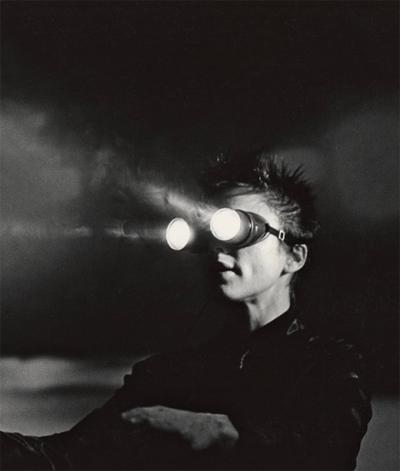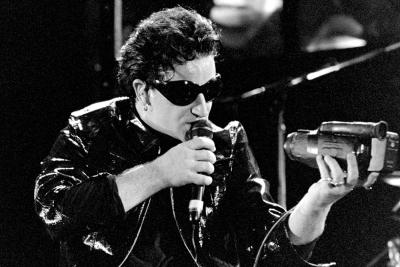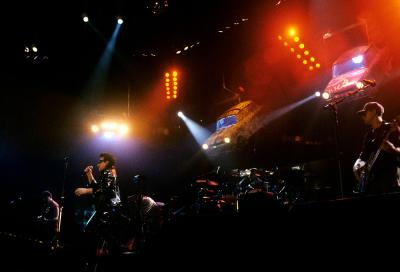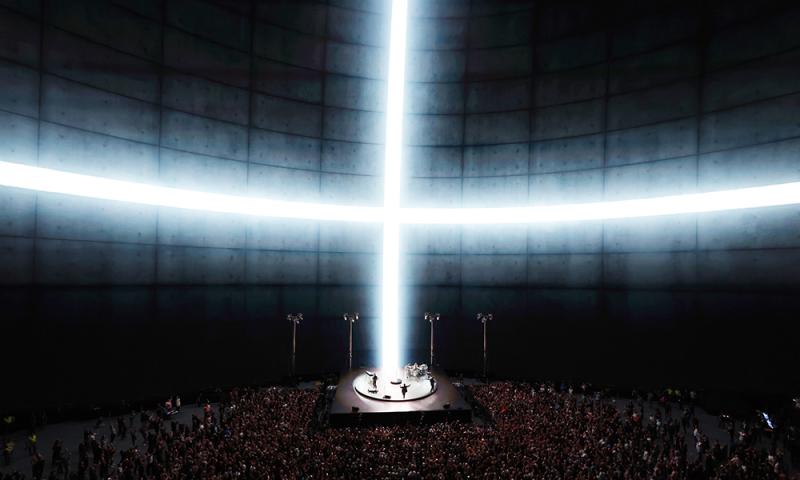
During his session on the first day of Showlight 2025, production and lighting designer Willie Williams claimed the title was slightly tongue in cheek because he is frequently asked about the future of live entertainment design and really, who knows? But the session took the audience through some of the highlights of his career, and shared the guiding principles and inspirations for his past work, demonstrating why his collaboration with U2 and various other concert and theatre projects have won him multiple awards. Those include a Drama Desk Award for his projections for Prima Facie on Broadway, and Eddy, Excellence, and Total Production Awards for lighting and production design.
Williams has been the creative director for U2 for more than 40 years, encompassing over a thousand shows in 240 cities around the world. Despite extraordinary past successes, every time they make a new show, he said, "We go back to the beginning. And the goal is always to create an emotional connection with the audience."
He began working with the band during the punk era, when, he said, "It was considered extremely gauche to design a show, but in larger arenas we needed something and we coined the term 'maximum minimalism.'" Williams started out in the 1980s and continued expanding U2's stage presence as the band became successful and moving lights became more common. But he began to notice that this new tool was beginning to make tours look the same. He mentioned a few inspirations that helped break away from the big rock show look, including Laurie Anderson, who was experimenting with technology in different ways.

He said, "The next time U2 were out, we took all the emerging technology and ran with it, basically assaulting the audience with tech, including the world's first selfie and a lighting system made of cars.


After that tour, Williams experimented with making video pixels our of LEDs behind canvas screens for both U2 and George Michael, eventually evolving the idea into the massive expanding and contracting inverted cone video screen featured on the U2 360 tour. Based on the Hoberman kinetic sphere sculpture, it solved the problem of the glaring Jumbotron screens and featured both live and recorded content.
One hallmark of the designer's work has always been humor, from the little Trabants, a symbol of East German car-making known for their petite dimensions and not particularly stellar safety record, to the spaceship-shaped mirror balls--he has previously said no concert is complete without a mirror ball. Another feature of his work is bringing in unlikely contributors to projects, such as Roy Lichtenstein on the PopMart tour, and the makers of the Hoberman sphere toy.
Most recently, he worked with U2 at Sphere, the inaugural event at the massive globe in Las Vegas which has since become the destination for music residencies. Without the blueprint created by Williams and Treatment Studio, it is hard to see how the Sphere would have survived as anything other than a movie theatre—there are no real lighting placements, no stage, and most of the audience is sitting at a frighteningly acute angle looking down, not conducive to dancing. He explained his approach to the venue. "Sphere is large enough to contain the Statue of Liberty and is designed to show movies at humongous scale in high resolution. But it occurred to me that the absence of corners was crucial for any kind of video design. We navigate space by the corners, they help provide a sense of scale, and without corners we can make our own space and scale. Our brains just buy it."
"We took the space and turned it into a cylinder or cube or dropped the roof down. We stopped thinking of Sphere as a screen and thought of it as space. It isn’t a visual medium, it is a psychological medium, and to maintain the illusion it is really important not to break the spell."
As images move on the screen, the audience perceives the whole building moving, including themselves, much like the feeling of sitting on a train in a station and the train next to you moves. In Sphere, it is both disorienting and also exhilarating, we are all going on the journey together.
The illusion begins as soon as the audience walks in to the venue. The internal projection surface echoes the Pantheon in Rome, open to the night sky. As the design progressed, Williams added visual gags; a pigeon flying around inside the dome, a red balloon floating up and moved by a breeze, and even a work light that would flicker. As the audience are seated, a helicopter arrives carrying the band to the soundtrack from Apocalypse Now. Spoiler alert: The pigeon and balloon are not real, and the band doesn’t arrive by helicopter.
Also spoiler alert: Those are not concrete panels with gaps for lighting, it is all a video screen.

Williams closed the presentation by saying, "It has been my task to understand how audiences work. We use lighting design to guide audiences. Since the Renaissance, painters have use perspective and our brains think it is real, even though we know it is just marks on canvas. In the Sphere, we all move together through the picture frame." He referenced the novel, Rainbow's End by Vernor Vinge, where humans interact with life through layers of virtual reality to make their own visual environment. But one of the accomplishments of Sphere, he said, is, "we are all in it together, not separated by technology. Music is the original immersive experience that enables us to lose ourselves in something. We’ve seen this before of course, cathedral builders knew a thing or to about entertainment and working at scale. They were the originators of go big or go home, understanding how to create a sense of awe and power. I only have one goal: to bring people together to share some of that joy and magic."
As for what's next, Williams suggested more immersive experiences, and possibly avatars for both the audience participating and for live performances by dead or absent performers. Will it work? he asked, no one knows. But he summed up the job of the live entertainment community this way, "The core of it is asking people to leave home, put their phone down, and come together."